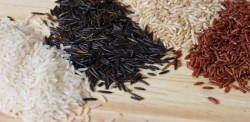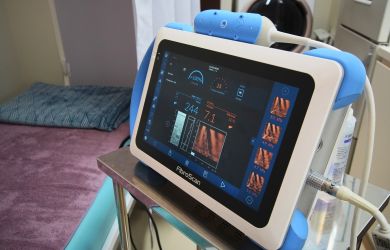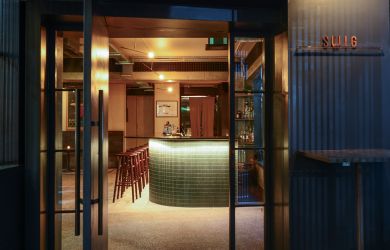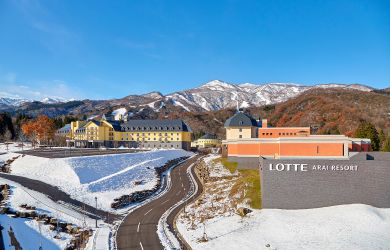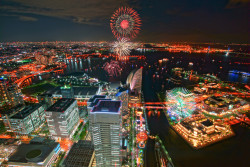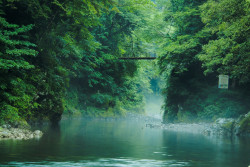
March 15, 2007
The Little Island
Escape the late-winter blues with a tropical blast from the past
By Metropolis
Originally published on metropolis.co.jp on March 2007

Photos by Stephen Mansfield
Like other tiny islands peppering the aquamarine waters of the Yaeyama chain in southern Okinawa, there isn’t a great deal to actually do on Kohama-jima. But for visitors who appreciate the atmospherics and minutiae of life in these distant parts, there is much to recommend.
As attractive as Kohama village is, it lacks the manicured beauty of other nearby island settlements. This is a working island, revolving around the daily lives of people engaged in agriculture and fishing. Perhaps because of these simple but painstaking activities, they seem friendly and communal in a way that has mostly vanished elsewhere. Youngsters on their vacations help out parents and grandparents in shops or in the fields; everyone has time for a cordial greeting or chat.
Kohama receives a modest number of visitors, but is otherwise blissfully quiet. Six passengers alighted from the ferry I took to the island. Two of them were locals. Like many of these islands, Kohama supports a small population—615 at last count.
About 50 children attend the combined junior and senior high school, a magnificently appointed building from where you can look down on the peerless blue waters below. Resident numbers on Kohama may sound low, but compared to some of the smaller islands in the chain, this place is positively bulging. Nearby Panari supports a mere seven inhabitants.

Although a stay on the island is recommended, a circuit of its modest features can easily be made on a day trip. The port area was originally a fishing village, home to families who settled there after leaving the mainland Okinawan town of Itoman. South of the port, Tumaru Beach is where many visitors head upon arrival, but walking a little further on takes you to the more secluded Kubazaki Beach, with white sands known to a cognoscente of visitors who go there to collect shells.
Ufudaki, the island’s 99-meter-tall “mountain,” can be a surprisingly stiff climb, especially in the summer. One local belief maintains that gods moved the peak from Taketomi-jima, which would certainly explain why that island is so flat. The views at the top, taking in the islands of Iriomote, Kuro, Hateruma and Aragusku, explain why they are celebrated in the local folk song, “Kohama Bushi.” Regular TV viewers will also know the name of the island from a shamelessly sentimental NHK TV drama from a few years back called Chura-san, which was filmed among the picturesque landscape.

Kohama’s “Sugar Road” passes through open fields, with stalks of cane growing high on both sides, and the well-protected mangrove forests along the island’s east coast are also worth a visit. A small path leads through the wood to a curving bay where the plants take root. While the cement wall and graduated observation decks are unsightly, the views and access they offer is welcome.
This would be a superb place to loiter at sunset, watching the mangrove darkening to pink and purple against the red sheet of water, but these islands are infested with poisonous snakes. I only saw one example of Kohama’s indigenous “hundred-meter snake,” giving it a respectful glance before moving on. Local lore says that, if bitten, 100m will be as far as you get before breathing your last.
Kohama follows the classic small island layout of the Yaeyamas: a functional, largely uninhabited port, a circular road, and a village located smack-bang in the middle—a sensible precaution against typhoons. While there are one or two concrete homes and minshuku, the houses here are mostly traditional, one-story residences in varying states of repair, each surrounded by a coral wall. Some of the older gardens have a second inner wall, in the manner of Chinese screen walls intended to deter malign spirits from entering the house. They also serve as windbreaks and ensure privacy. Signs of old wells, water storage jars and old wooden tables and planters create the impression of a messy but used space.
The gardens’ decorative touches reflect climatic differences, but also disparities in taste and cultural preference. Unlike mainland Japanese gardens, which often seem like art arrangements intended for hushed observation, Okinawan gardens are lived in. Less places to contemplate nature than to make contact with it, locals sit and chat under the shade of trees, smelling nature, feeling it ripple over their skin. And the sense of color too, is invariably different: luxuriant tropical flowers, light tones of worn, salt-encrusted wood verandas, eaves and pillars, and orange roof tiles against clean blue skies.
It may sound the stuff of a carefully contrived stereotype, but it really is possible when strolling past one of these gardens to hear the plucked notes of the three-stringed sanshin, to see its player contentedly settled with a glass of awamori, the local firewater, by his or her side.
Linger in these marine gardens long enough and you have a good chance of experiencing a genuine, Okinawan trance state.
There are regular ferries to Kohama from Ishigaki port; the Anei Kanko company’s first boat leaves at 7am, and the trip takes about 30 minutes. The very smart Haimurubushi Resort (0980-85-3111, <http://www.haimurubushi.co.jp/index.html) is expensive, but you’ll be pampered. The same applies to the Villa Hapira Pana (9800-4-63000), a high-end Balinese-style resort with ocean-view private baths. More modest digs can be had at the Minshuku Miyara (0980-85-3553) and the Higa-so (0980-85-3150). The tourist office in the port has a bicycle rental service, but cycling can be strenuous, especially in the summer months. Scooters are recommended. There are two friendly rental shops just opposite the quay. The village has a small Okinawan soba restaurant; you can also eat at the above hotels, or get takeout at the village store.
[geo_mashup_map]

